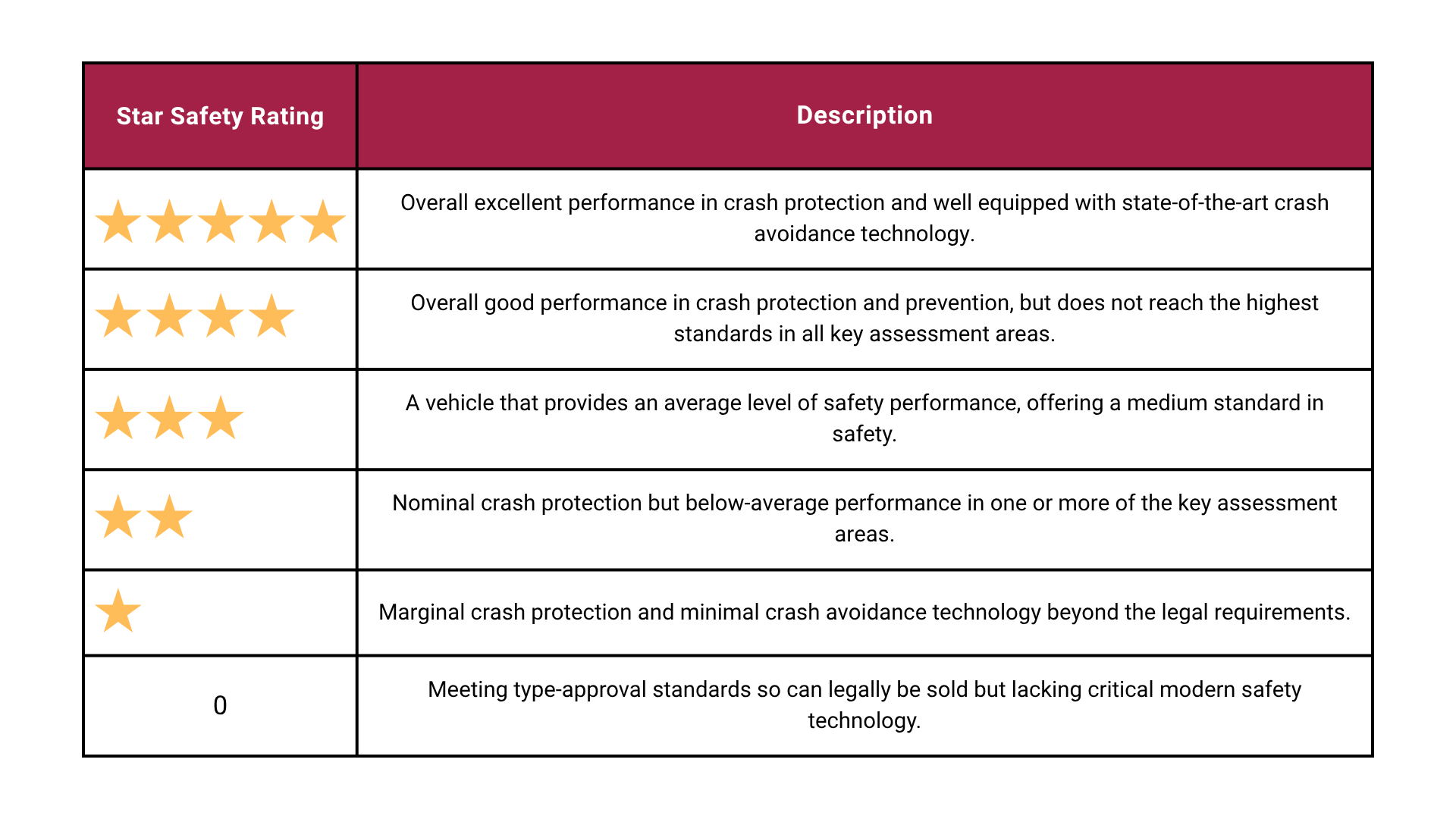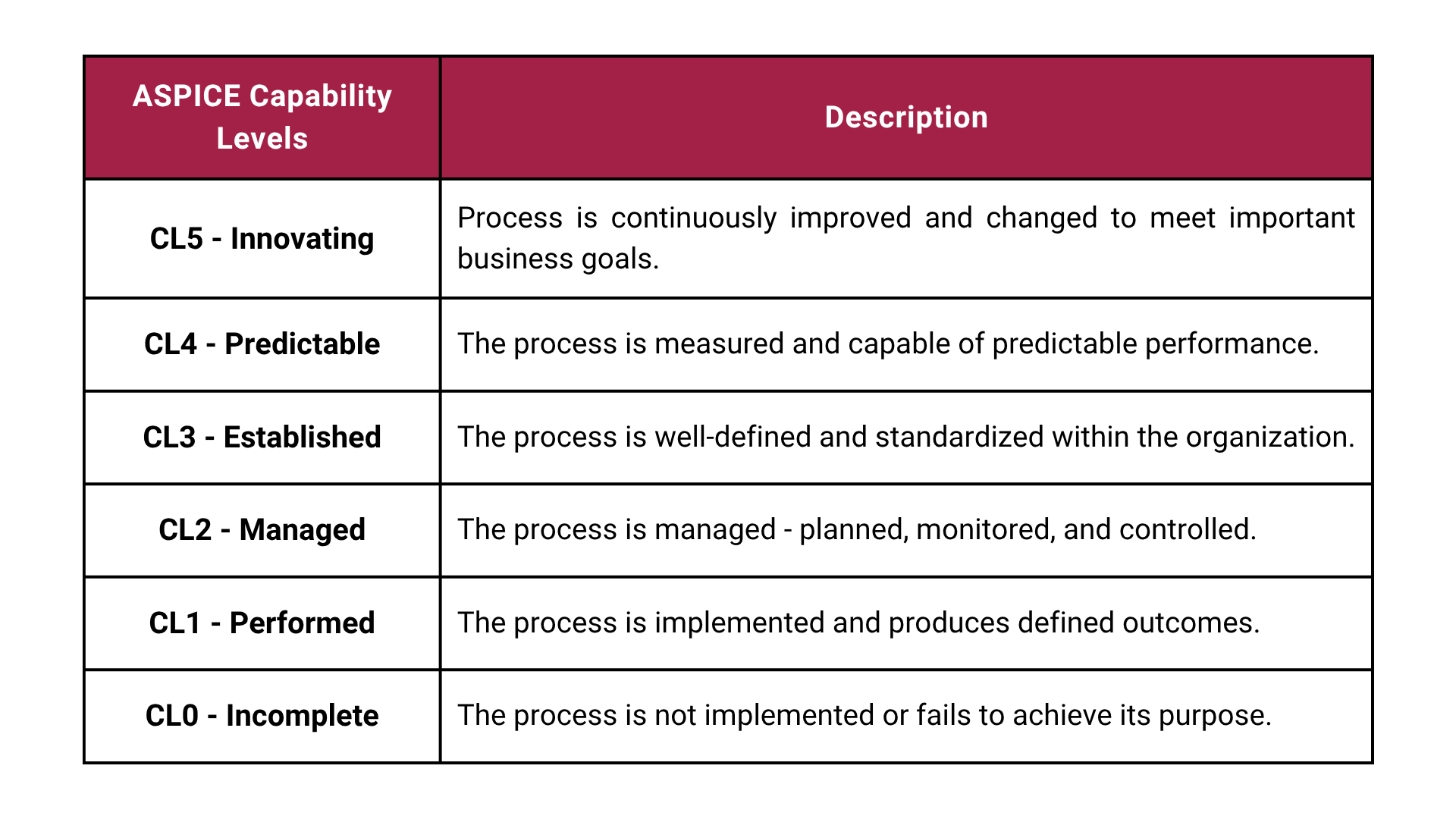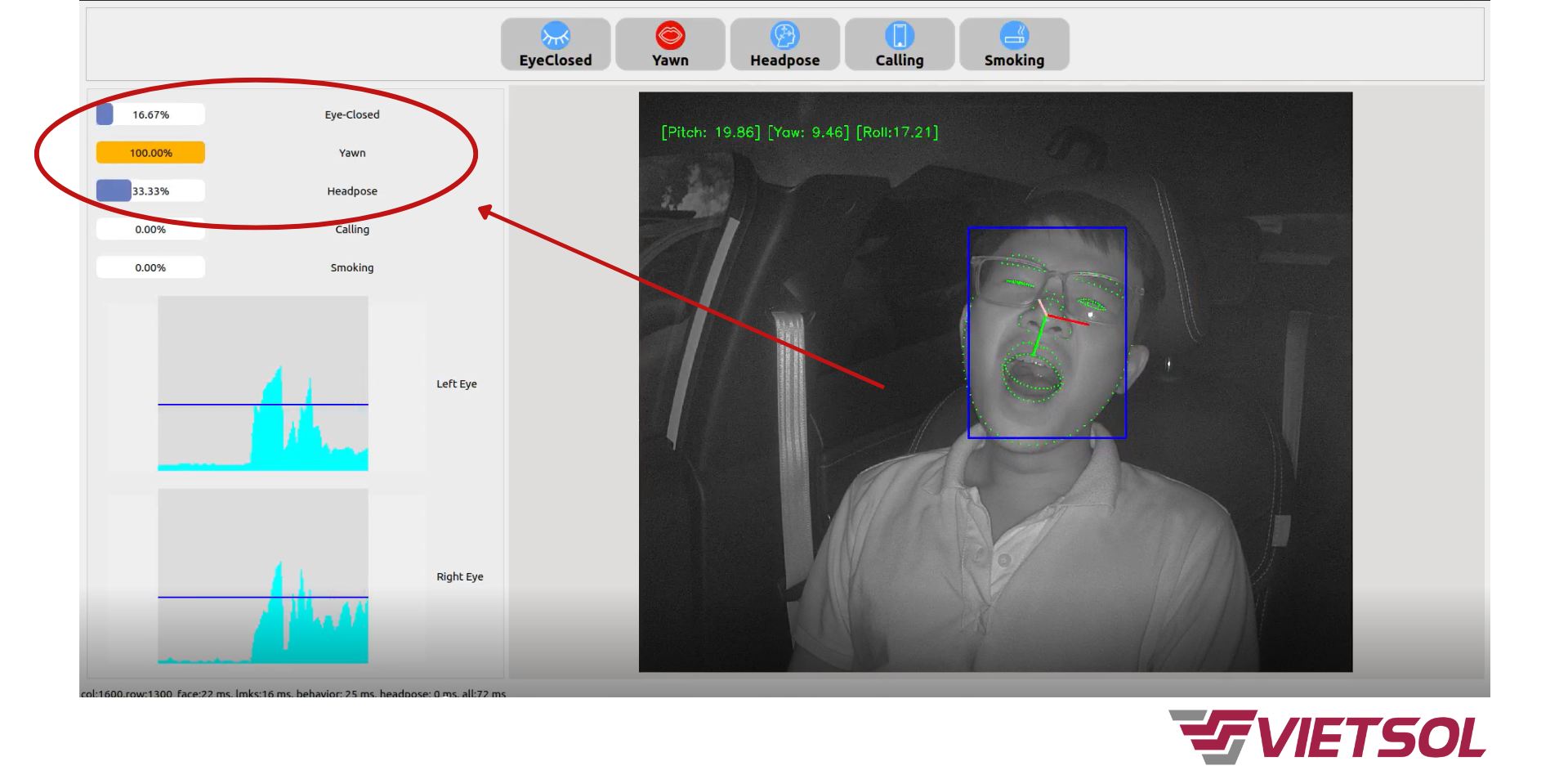As the automotive industry enters the era of intelligent vehicles, expectations for in-vehicle safety assistance are higher than ever. Driver and Occupant Monitoring Systems (DMS/OMS) are now indispensable to active safety. To ensure maximum performance and reliability, DMS/OMS development should meet Euro NCAP requirements that define rating protocols and test procedures for safety performance, while also complying with Automotive SPICE (ASPICE), the process assessment and improvement model that governs how teams design, test, and assure quality. In this article, Vietsol explores how these two pillars together shape the future of DMS/OMS and what practical compliance means for companies building and supplying automotive solutions.
Euro NCAP – a real-world performance standard for DMS/OMS
What is Euro-NCAP?
Euro NCAP (New Car Assessment Programme) is the vehicle safety assessment programme for new cars in Europe. It runs tests that simulate real-world crash and hazard scenarios to evaluate vehicle safety and produce a rating used to compare new car models entering the European market. Widely known simply as NCAP, this benchmark safety program has been broadly adopted across Europe, helping cement the region’s reputation as a global leader in automotive safety.
NCAP’s tests cover conditions and situations that endanger in-vehicle occupants (adults and children), road users (pedestrians, cyclists), and evaluate the performance of safety assist systems in the vehicle. A five-star safety rating is used to summarize overall performance, where 0 is the lowest and 5 is the highest.

A vehicle that achieves a 5-star Euro NCAP rating demonstrates excellent protection for occupants and shows that its active and passive safety systems meet the stringent requirements expected in European markets – historically a benchmark region for vehicle safety standards.
Euro NCAP Requirements
Euro NCAP defines protocols for each test category to ensure consistent and transparent assessments across different models and feature sets. Each protocol details test procedures, measurement conditions and scoring criteria that reflect real-world safety performance. Euro NCAP’s assessment is structured around four primary areas:
- Adult Occupant Protection: evaluates the protection of adult occupants in-cabin.
- Child Occupant Protection: evaluates child restraint systems (CRS) effectiveness and the protection of child passengers in-cabin.
- Vulnerable Road Users: evaluates the protection of pedestrians and cyclists, based on the Pedestrian and Cyclist Safety Protocol.
- Safety Assist: evaluates the effectiveness of active safety assistance systems (collision warnings, driver assistance,…), including Driver and Occupant Monitoring Systems (DMS/OMS).
DMS/OMS in Euro NCAP
Driver Monitoring Systems (DMS) and Occupant Monitoring Systems (OMS) are increasingly emphasized within active safety standards. Euro NCAP has integrated DMS/OMS into its scoring criteria as these systems can detect potentially dangerous behaviors early and improve occupant protection – a crucial capability when intelligent and partially automated vehicles become more common.
DMS/OMS are evaluated under the Safety Assist protocol (source), directly affect a vehicle’s overall safety score.
Since 2023, Driver Status Monitoring (DSM) has been a mandatory scoring criteria in Euro NCAP. It evaluates a vehicle’s ability to detect abnormal driver states and how monitoring systems respond to them, including:
- Distraction: looking away from the road, phone use
- Signs of fatigue: eye closure, blink frequency,…
- Loss of control indicators: driver not responding to warnings or showing signs of impaired driving.
Beyond these behaviors, the protocol evaluates system performance across diverse driver characteristics (skin tone, age, eyeglass use,…) and operational conditions (night driving, glare). With this protocol, DMS has become a mandatory requirement for OEMs targeting a 5-star Euro NCAP rating. The absence of a DMS or a DMS that fails to meet requirements will negatively affect a vehicle’s star rating and, consequently, its competitiveness and sales in the European market.
OMS is expected to become a mandatory criteria of Euro NCAP evaluations in 2025-2026, reflecting Euro NCAP’s strategic shift from passive protection to active and comprehensive occupant safety. OMS will be assessed on its ability to:
- Verify seat-belt use for all occupants, including rear passengers.
- Detect children in the vehicle (Child Presence Detection – CPD)
- Classify occupants (adult, child, infant).
- Detect out-of-position occupants.
Standardizing DMS/OMS according to Euro NCAP’s evaluation not only helps OEMs and suppliers meet safety expectations but also provides a competitive edge when entering the European market, where active safety is becoming mandatory for new vehicle generations.
ASPICE – the standardized process framework required for DMS/OMS development
ASPICE provides the standardized process backbone that DMS and OMS projects are expected to follow. It defines how teams capture requirements, design, implement, verify, and manage change in a disciplined, traceable way that OEMs can audit. For DMS and OMS, ASPICE compliance helps reduce defects, supports integration with MBSE and ISO 26262 practices, and creates the process quality needed to meet Euro NCAP performance goals.
Automotive SPICE – the software and systems process capability assessment framework for the automotive industry
Unlike outcome-oriented safety programs such as Euro NCAP, Automotive SPICE is a process framework for software and systems engineering in the automotive domain.
Automotive SPICE, short for Automotive Software Process Improvement and Capability Determination, provides a standardized way to evaluate the capability of software and systems development processes across the industry.
The framework traces its roots to ISO/IEC 15504 (SPICE) and was tailored for automotive by a Special Interest Group made up of OEMs, suppliers, and bodies such as VDA-QMC in Germany and intacs.
Using this assessment model, organizations gauge the capability and maturity of their development processes, checking whether they are defined, repeatable, measurable, and auditable. Automakers rely on supplier assessment results to:
- Ensure suppliers operate reliable development processes with proper documentation, verification and management.
- Reduce software defects, compatibility issues and repair costs.
- Select suppliers with appropriate process maturity for relevant system development.

6 ASPICE Capability Levels
Depending on each OEM’s quality strategy and acceptable risk level, ASPICE compliance may be mandatory or recommended.
- For European OEMs (such as BMW, Mercedes-Benz, and Volkswagen), ASPICE compliance is typically mandatory, especially for systems that have a high impact on vehicle safety, such as DMS/OMS.
- In contrast, some other OEMs may only require internal self-assessments or compliance evaluations based on supplier agreements.
DMS/OMS and ASPICE
The Driver and Occupant Monitoring Systems (DMS/OMS) are complex technical systems that require real-time image capture, processing, and response software, directly impacting vehicle and occupant safety. Therefore, the quality of a DMS/OMS does not only depend on whether it functions correctly, but also on the maturity and capability of the software development process behind it – the foundation that ensures a truly reliable DMS/OMS system.
That is why ASPICE is applied as a standardized process assessment model for evaluating the software development process of DMS/OMS. Rather than examining whether “the system can detect a drowsy driver”, ASPICE evaluates how the process that produced that algorithm was established, verified, and continuously improved under controlled conditions: how the engineering processes (such as SYS and SWE) for DMS/OMS were carried out, from requirements gathering, system design, module testing, to validation and verification.
For such complex automotive systems as DMS/OMS, achieving ASPICE Capability Level 2 (CL2) or Level 3 (CL3) serves as evidence of high-level software quality management capability, making OEMs believe that:
- The development process is well-controlled, with the ability to detect and correct defects early.
- The final product is highly stable and can be seamlessly integrated with other vehicle safety assist systems.
- Technical and maintenance risks after deployment are significantly minimized.
For this reason, leading European OEMs such as BMW, Mercedes-Benz, and Volkswagen typically require DMS/OMS suppliers to ensure that their software development processes meet at least ASPICE CL2 or CL3, viewing this assessment result as a “passport” to participate in their safety-critical automotive software supply chain.
Euro NCAP and ASPICE – From standards to real-world applications for businesses
Why should businesses care about Euro NCAP and ASPICE?
Driver and Occupant Monitoring Systems (DMS/OMS) not only help companies monitor fleet operations, but also directly assist drivers and passengers throughout every journey. When abnormal in-cabin behavior is detected, the system issues instant alerts, helping the driver adjust their behavior, thereby reducing the risk of accidents and improving operational safety.
As systems that both monitor and enhance safety, DMS/OMS must comply with Euro NCAP as a benchmark for real-world performance, and ASPICE as a process framework ensuring development reliability and consistency throughout the entire system development process.
Together, Euro NCAP and ASPICE create Driver and Occupant monitoring systems (DMS/OMS) that are both effective in performance and comprehensive in safety assurance:
- DMS/OMS for driver and occupant behavior monitoring and alerting: Euro NCAP ensures that the system can accurately and promptly recognize dangerous behaviors or conditions under various driving environments (low light, glare,…) to provide timely and appropriate alerts. Meanwhile, ASPICE ensures that the software processes behind these capabilities are tightly controlled, minimizing errors in image data processing and alert decision-making.
- DMS/OMS for driver and fleet management: For any organization that operates vehicles and drivers – from ride-hailing and last-mile delivery to utilities, field services, public fleets, rentals, construction, mining, hospitality shuttles, and healthcare transport – ASPICE helps ensure the system integrates across diverse vehicle models and management platforms while processing and synchronizing real-time data from the cabin to the operations center. Achieving this requires a well-structured, scalable development process that is ASPICE compliant from design through testing and maintenance.
Competitive Advantages for Businesses with DMS/OMS Built to Euro NCAP Requirements and ASPICE Processes
Simultaneous compliance with both Euro NCAP and ASPICE delivers strategic value for automotive software suppliers, OEMs, and fleet operators, ensuring safety, reliability, and operational efficiency throughout every stage of the product lifecycle.
For automotive solution and software suppliers
- Build global credibility and competitiveness: Achieving ASPICE CL2-CL3 and meeting Euro NCAP performance standards helps companies expand opportunities to become trusted partners of leading automotive OEMs.
- Lower technical and legal exposure: Errors in DMS/OMS can reduce system accuracy and potentially prevent timely driver assistance in critical moments. ASPICE ensures that every phase of the development process – from requirements definition, system design, software testing, to validation – is controlled and traceable, thereby reducing defects and post-production repair costs.
- Streamline execution and shorten cycles: ASPICE enables organizations to standardize processes, improve collaboration among engineering teams, and enhance R&D productivity.
For Vehicle Manufacturers (OEMs)
- Increase confidence in system quality: Working with ASPICE-competent suppliers whose DMS/OMS perform well under Euro NCAP supports stability, compatibility, and safety objectives.
- Minimize integration risks and warranty costs: Systems developed through controlled ASPICE processes reduce the likelihood of integration issues among multiple in-vehicle systems and minimize post-launch warranty expenses.
- Boost safety ratings and brand trust: DMS/OMS that satisfy Euro NCAP criteria contribute to five-star outcomes and reinforce reputation in regulated markets.
For Organizations Operating Vehicle Fleets (across industries)
- Improve safety and regulatory compliance: ASPICE and Euro NCAP compliant DMS/OMS solutions can accurately detect driver conditions, issue early warnings, and prevent accidents, helping companies meet safety regulations and improve driver accountability.
- Deliver stability and scale in the field: DMS/OMS that comply with ASPICE and Euro NCAP are known for their high stability, seamless integration with various vehicle types and fleet management systems, ensuring continuity and safety in long-term operations.
Key considerations for businesses when selecting a DMS/OMS supplier
Selecting a Driver and Occupant Monitoring System is not just a feature checklist of face identification, drowsiness detection, or behavior scoring. It is a due-diligence exercise on software capability, process discipline, and adherence to international safety benchmarks. The points below outline what organizations should weigh when evaluating a DMS/OMS partner.
ASPICE Capability Level (Software Process Maturity)
Suppliers certified at ASPICE Capability Level 2 (CL2) or higher can provide assurance that their software development processes are well-controlled, traceable, and continuously improved. This means that every stage of their DMS/OMS development – from requirements gathering, system design, coding, testing, to validation – follows a standardized process, minimizing technical risks, enhancing stability, and improving software reusability across future projects.
This capability level is also the standard requirement among leading European OEMs such as BMW, Mercedes-Benz, and Volkswagen for projects involving safety-critical systems like DMS/OMS, ensuring product quality, interoperability, and seamless vehicle integration.
Real-world performance and Euro NCAP certification
Businesses should review Euro NCAP test reports or certifications from independent evaluation organizations to assess system performance under simulated driving conditions. A 5-star Euro NCAP rating demonstrates a system’s ability to accurately detect, analyze, and respond to driver fatigue or distraction, meeting stringent operational safety requirements.
Additionally, Euro NCAP certification serves as proof of compliance with the European market’s strict safety standards, giving businesses greater confidence in the quality and reliability of their investment.
Integration breadth and scalability
An effective DMS/OMS should interoperate across varied vehicle categories such as long-haul coaches, heavy trucks, taxis, and light commercial vehicles, while connecting cleanly with other in-vehicle safety systems to form a unified safety layer. When integrated seamlessly, these systems can share sensor data in real time, enhancing both vehicle safety and fleet management efficiency.
For organizations that operate vehicle fleets across industries, assess whether the system can stream driver state, behavior metrics, and risk alerts to a control center for timely supervision and decision-making.
Technical support and software lifecycle
Beyond system performance, companies should assess the supplier’s post-sale technical support, including maintenance services, Over-the-Air (OTA) software updates, and compliance with the UNECE WP.29/R155 cybersecurity regulation. These factors ensure long-term compatibility, security, and reliability, especially as modern vehicles increasingly rely on regular software patches and updates to maintain safety and performance over time.
Vietsol and the journey to standardize DMS/OMS with Euro NCAP and ASPICE
In the context of increasingly stringent automotive safety regulations in Europe, Vietsol continues to standardize the Driver and Occupant Monitoring System (DMS/OMS) development process according to two of the most recognized international frameworks – ASPICE and Euro NCAP.
Vietsol is working toward achieving ASPICE Capability Level 2 (CL2) – a level that demonstrates controlled, traceable, and continuously improved software development processes. From requirements definition, system design, and software development to testing and validation, Vietsol’s DMS/OMS development aligns with the rigorous standards expected in the European automotive market.
With the strength in Edge AI, Vietsol develops DMS/OMS solutions capable of in-cabin image processing and driver–occupant behavior recognition in real time. This enhances detection accuracy, reduces latency, and minimizes dependence on cloud or server connectivity. As a result, the system delivers faster response times in real-world scenarios such as driver drowsiness, distraction, mobile phone use, or smoking – one of the key performance factors in the Euro NCAP 2026 assessment criteria.

With this direction, Vietsol aims not only to develop a cutting-edge automotive product but also to become a trusted provider of intelligent, internationally certified DMS/OMS solutions, contributing to elevating Vietnam’s technological position in the global automotive supply chain.
The combination of ASPICE-compliant development processes, Euro NCAP measured performance, and advanced Edge AI technology forms the foundation for Vietsol to deliver DMS/OMS solutions that meet Europe’s stringent technical standards while ensuring cost efficiency and customization flexibility for OEMs. This marks a significant milestone in Vietsol’s journey toward a safer, smarter, and more sustainable mobility future – where Vietnamese technology stands confidently with other global partners.
Conclusion
Euro NCAP and Automotive SPICE (ASPICE) are not just standards – they are the foundations of performance assurance and system safety for modern Driver and Occupant Monitoring Systems (DMS/OMS). With DMS/OMS solutions that comply with Euro NCAP and ASPICE, automotive manufacturers can be confident in the reliability, stability, and compatibility of these systems when integrated into commercial vehicle models. This not only enhances brand credibility and customer trust but also supports regulatory compliance and market competitiveness in global automotive markets. Thereby, automotive software and solution providers improve internal processes, global recognition, and expanded collaboration opportunities with international cả manufacturers.
With the strengths in Edge AI technology and deep in-vehicle integration expertise, Vietsol is committed to delivering intelligent DMS/OMS solutions that enable safe and sustainable fleet management, advancing Vietnam’s position in the global automotive technology landscape.

 Tiếng Việt
Tiếng Việt
RELATED NEWS
From Euro NCAP Ratings to ASPICE Processes: Shaping DMS/OMS Development in Automotive
As the automotive industry enters the era of intelligent vehicles, expectations for in-vehicle safety assistance are higher than ever. Driver and Occupant Monitoring Systems (DMS/OMS) are now indispensable to active safety. To ensure maximum performance and reliability, DMS/OMS development should meet Euro NCAP requirements that define rating protocols and test...
Security Testing: The Essential Role in Automotive Cybersecurity
The explosive rise of interconnected automotive technologies is transforming the driving experience like never before. From seamless keyless entry and smartphone apps that control in-vehicle functions, to Vehicle-to-Everything (V2X) systems that enable cars to communicate with infrastructure, other vehicles, and real-time data sources — today’s vehicles are smarter, safer, and...
What are Driver and Occupant Monitoring Systems (DMS/OMS)?
In the automotive industry, many safety incidents originate from human factors inside the vehicle cabin, such as driver distraction, drowsiness, or passengers not wearing seat belts. As a result, in-cabin monitoring and proactive responses to abnormal behaviors are becoming increasingly essential. The Driver Monitoring System (DMS) and Occupant Monitoring System...